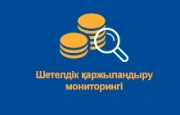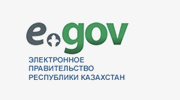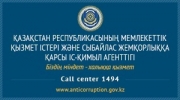
The formation of the regulatory legal framework of tax regulation of the Republic of Kazakhstan was formed simultaneously with the development of the tax system. The Tax Code of the Republic of Kazakhstan is one of the codified acts in the system of legislation of the Republic of Kazakhstan regulating tax relations.
After the Republic of Kazakhstan gained independence, the country faced the task of forming a sovereign economy that meets the new requirements of market relations at that time. A special place was occupied by the problem of building a sovereign tax system as one of the main conditions for the independence of the entire economic system of Kazakhstan.
The priority task of the state's tax policy at that time was to create favorable financial conditions for the formation of a market economy, attracting foreign investment, especially in the raw materials sector of the economy, which at that time was the main factor in economic growth.
The development of the tax system of Kazakhstan to date can be divided into 4 stages, based on the adoption of tax codes.
The first stage – 1991-1995. At this stage, the formation of the sovereign tax system of Kazakhstan has begun. The first special tax authority among the CIS countries, the Main State Tax Inspectorate, was created, and a package of laws on taxation regulation was adopted. The main one at that time was the law "On the tax system in the Republic of Kazakhstan", in this document the basic principles of taxation are defined. Within the framework of the law, 43 taxes were supposed, including 16 national, 10 mandatory local, 17 local taxes. This stage was the basis for the further development of the country's tax system. Tax legislation at that time had a complex non-systemic form and consisted of 45 separate laws and three decrees of the President of the Republic of Kazakhstan.
The second stage of 1995-2002 in order to further optimize the tax administration system, as well as create the most favorable conditions for the development of market relations, the first Tax Code of the Republic of Kazakhstan was developed and adopted. The Decree of the President of the Republic of Kazakhstan "On taxes and other mandatory payments to the budget" (Tax Code) entered into force on July 1, 1995 and thereby became the first Tax Code adopted among the CIS countries, the new code defined 11 types of taxes and fees. The main positive effect of the adopted code was to reduce the tax burden on the enterprise by reducing the number of taxes from 75-85 to 45-55%.
In the early 2000s, a lot of work was carried out in Kazakhstan to revise the activities of tax authorities and tax legislation, as well as the automation of business processes. This work was carried out in active cooperation with the International Bank for Reconstruction and Development - the World Bank. The involvement of the World Bank as a partner in the implementation of reforms allowed Kazakhstan to gain access to the best international practices of the tax system. Eventually, such information systems as the Integration Tax Information System (INIS) appeared. Taxpayers have gained access to the opportunity to pay taxes to the budget through the Internet services of the leading banks of the Republic of Kazakhstan.
The third stage of 2002-2008. At that time, the economy required many measures for tax reforms related to the introduction of new economic categories. For example, with the creation of a pension system, as well as the emergence of many other financial instruments, as well as the emergence of state programs for industrial development and economic diversification. It became necessary to create a new Tax Code, which was put into effect on January 1, 2002.
The fourth stage of 2009-2016. Based on the task of creating updated tax legislation, a new Tax Code was developed and adopted in December 2008. The new code was supposed to further diversify the economy, as well as reduce the share of the shadow economy. A distinctive feature of this stage is the reduction of the tax burden on entrepreneurs, by reducing the VAT rate, revising the payment of excise taxes, at the same time, a gradual increase in the tax burden on subsoil users was carried out.
In December 2014, by the decree of the Government of the Republic of Kazakhstan, the tax and customs authorities were reorganized into a single state body - the State Revenue Committee of the Republic of Kazakhstan, to which the functions of investigating economic and financial crimes were also transferred.
The fifth stage is 2017-present. Today, tax relations are regulated by the Code adopted in 2017. The regulatory body is the State Revenue Committee of the Ministry of Finance of the Republic of Kazakhstan.
The Code provides for certain progressive measures aimed at improving the system of tax regulation of small business activities. The most important of them is the introduction of a special preferential tax regime, including with respect to small businesses, farms, legal entities of producers of agricultural products.
The modern tax system is developing at a dynamic pace. At the same time, the tax mechanism is being improved. Stimulating the economic growth of the real sector of the economy is carried out through simplification of the taxation procedure, as well as reducing the tax burden. The search for the optimal amount of rates should ensure a balance between the interests of the state and taxpayers.




























